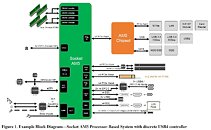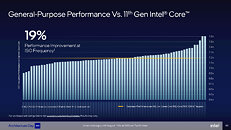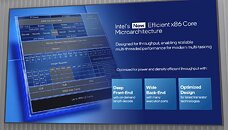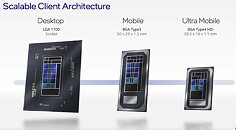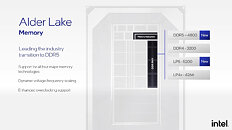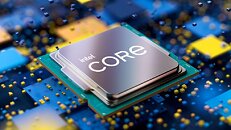
Intel 12th Gen Core "Locked" Processors Arrive Mid-Jan, Possible Specs Surface
Intel debuted its 12th Gen Core "Alder Lake-S" desktop processor family late last month with only the unlocked "K" and "KF" SKUs targeting gamers and PC enthusiasts, alongside only the top Z690 chipset motherboards. The company is preparing to expand the lineup early next year with the addition of at least seven more SKUs (excluding additional "F" variants that lack integrated graphics). These processors could also introduce more value-conscious motherboard chipsets, such as the B660 and H670. momomo_us on Twitter, a reliable source with hardware leaks, predicts specs and a possible mid-January launch date for these chips.
The lineup possibly includes the Core i9-12900 and i9-12900F at the top, followed by the i7-12700 and i7-12700F, and the meaty Core i5 lineup that includes the i5-12600 and i5-12600F; the i5-12500, and the i5-12400/F. At least two Core i3 series SKUs could also be launched. The possible clock-speeds, and L3 cache sizes for the SKUs are tabulated below. What stands out from these SKUs is the specs of the Core i5-12600. We earlier thought it would be based on the larger "C0" silicon, with 6 P-cores and 4 E-cores, but it turns out, that the SKU is based on the smaller "H0" silicon with just 6 P-cores and no E-cores. Read more about the two silicon variants of "Alder Lake-S" in our older article. The i5-12600 will have significantly different performance and energy efficiency numbers than the i5-12600K.
The lineup possibly includes the Core i9-12900 and i9-12900F at the top, followed by the i7-12700 and i7-12700F, and the meaty Core i5 lineup that includes the i5-12600 and i5-12600F; the i5-12500, and the i5-12400/F. At least two Core i3 series SKUs could also be launched. The possible clock-speeds, and L3 cache sizes for the SKUs are tabulated below. What stands out from these SKUs is the specs of the Core i5-12600. We earlier thought it would be based on the larger "C0" silicon, with 6 P-cores and 4 E-cores, but it turns out, that the SKU is based on the smaller "H0" silicon with just 6 P-cores and no E-cores. Read more about the two silicon variants of "Alder Lake-S" in our older article. The i5-12600 will have significantly different performance and energy efficiency numbers than the i5-12600K.



































